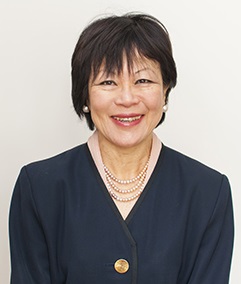Trusted Resources: People & Places
Healthcare providers, researchers, and advocates
Swee Lay Thein, MB, BS, FRCP, FRCPath, DSc
Researcher Senior Investigator
Sickle Cell Branch
National Heart, Lung, and Blood Institute, NIH
Building 10, Room 5-5142
10 Center Drive
Bethesda, Maryland, United States
Swee Lay Thein is the Chief of the Sickle Cell Branch of the National Heart, Lung, and Blood Institute, NIH. She was educated in both Malaysia and the United Kingdom. She completed her specialist training in hematology at the U.K. Royal Postgraduate Medical School, Hammersmith, and the Royal Free Hospital, London. In 1982, she joined the U.K. Medical Research Council Molecular Hematology Unit in Oxford where she held various positions, including clinical training fellow, Wellcome Senior Fellow in Clinical Science, senior clinical scientist, and honorary consultant hematologist.
Dr. Thein was appointed in 2000 to the position of professor of molecular hematology and consultant hematologist at King’s College London, and served as clinical director of the Red Cell Centre in King’s College Hospital. Dr. Thein joined the NHLBI in spring 2015 as Senior Investigator and Chief of the institute’s newly formed Sickle Cell Branch. Dr. Thein was Chair of the European Hematology Association’s scientific working group for red blood cells and iron disorders from 2011–2014 and has also has been instrumental in organizing scientific and educational conferences on red blood cell disorders for the European Hematology Association and European School of Hematology.
Dr. Thein’s research explores the underlying genetic mechanisms affecting the formation of fetal hemoglobin, which could lead to new ways to reduce the severity of sickle cell disease complications, including pain.
Representative Publications:
Voxelotor treatment of a patient with sickle cell disease and very severe anemia
HBS1L-MYB intergenic variants modulate fetal hemoglobin via long-range MYB enhancers
Related Content
-
Richard Lottenberg, MDDr. Richard Lottenberg is a faculty memb...
-
Kenneth Ataga, MDDr. Ataga's clinical interest is in clas...
-
Annual Sickle Cell Disease and Thalassaemia Conference (ASCAT) 2022The Annual Scientific Conference on Sick...
-
The 2020 ASPHO Conference – CANCELEDMore than 1,200 pediatric hematology/onc...
-
Benign Hematologic Disorders in Children, an Issue of Pediatric Clinics of North America, Volume 65-3This issue will provide a current update...
-
The Regional Comprehensive Sickle Cell Center at Robert Wood Johnson Medical SchoolThe Division of Hematology provides spec...
-
Your Healthcare TeamTo seek clinical care for your sickle ce...





 +myBinder
+myBinder
